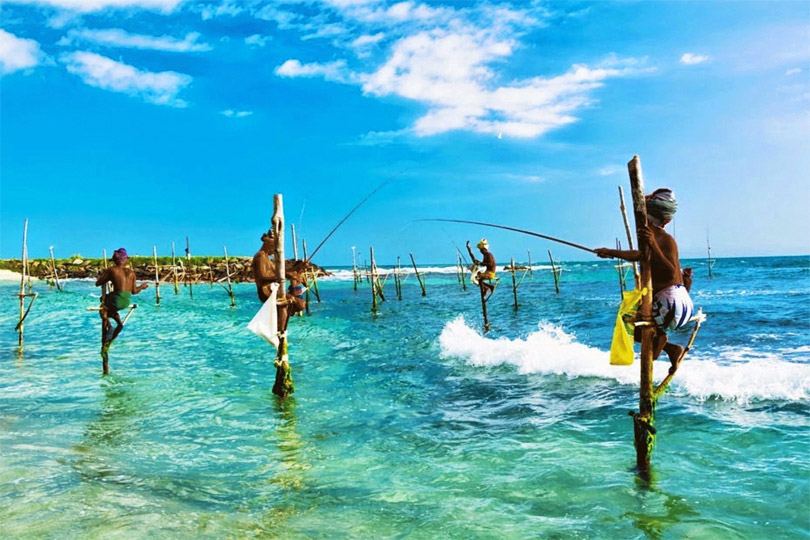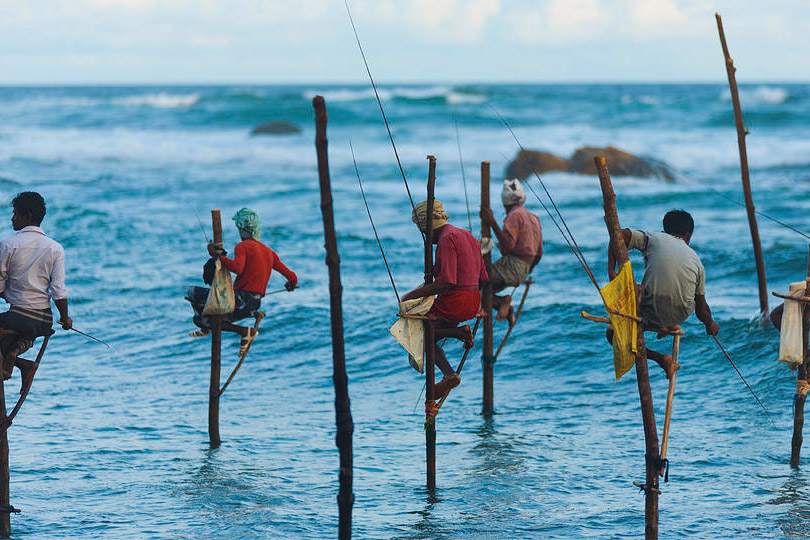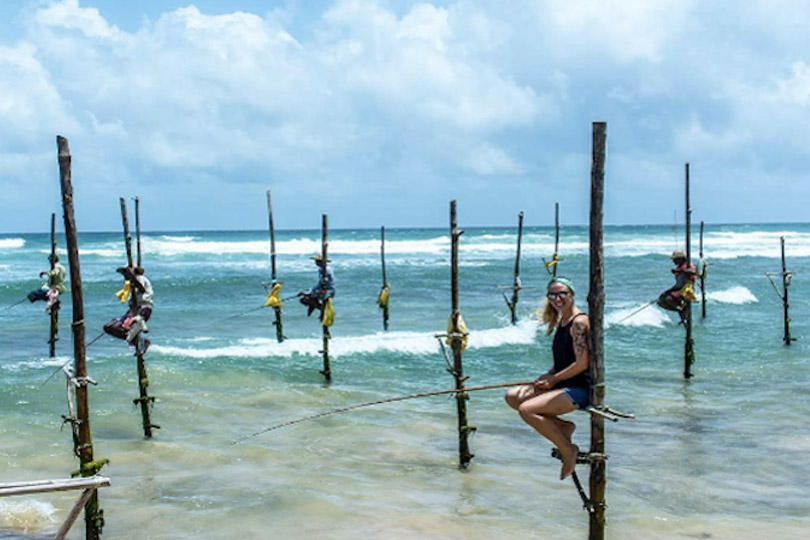
Stilt fishing
Ritipanna is the Sinhalese term for stilt fishing, which is a traditional method for fishing practiced by most fishermen along the southern coast of Sri Lanka. This art is popularly seen in areas such as Ahangama, Koggala, Welipenna, Kathaluwa and Thalarambe. A narrow pole is tied to a stick that is anchored on the sea bed. Fisher folk climb onto this stick and settle on the pole for a few hours in an effort to catch some fish.
Fishermen found on stilts are those who do not have access to sophisticated equipment for fishing. These men can make a living simply with the help of two wooden poles to make a stilt.

One pole is nailed onto the sea bed and the other is placed like a cross bar and acts as a plank for the fishermen to sit on. Each stilt can accommodate only one fisherman.
For catching fish, they create a rod made of Kithul, and a small plastic bag is tied around their waist to hold the fish that they catch. With one hand they hold onto the stilt and with the other they hold the rod that catches fish. The tradition of stilt fishing will always be practiced by those who cannot afford to invest in modern fishing equipment.
This picturesque view of stilt fishermen is a huge attraction for tourists. On their list of ‘things to do in Sri Lanka’ is an opportunity to test their skills at stilt fishing in exchange for cash from the stilt fishermen. Hence Blue Lanka Tours makes sure to include this activity in all the itineraries that cover the southern coast of Sri Lanka.

According to stilt fishermen, this art requires a lot of patience and endurance. The first lesson is to strike a balance while sitting on the narrow wooden plank. Then the process requires several hours of waiting in absolute silence while catching the fish. At the end of this still and silent session, the fishermen feel numbness in their feet.
They should not move or make any sound because if there is even a slight disturbance in the atmosphere, the fish will swim away. Motor boats, divers and sea bathers in the vicinity could hamper the activity of stilt fishing.

Stilt fishing season is at its peak during the southwest monsoon because fishermen using boats also end up on stilts since the sea is too rough. At sunrise and sunset, stilt fishermen line up on the southern coastal belt. The morning session goes on till about 9.00a.m., or until they have sold their day’s catch to nearby village buyers who come to the stilt fishing location. Fishermen on stilts usually catch small fish like the spotted herring and tiny mackerel.
The evening stilt fishing session is usually to entertain foreigners, and this ends at sunset. Tourists like to climb up on the stilt and actually experience this activity as well as capture photographs for memories.
